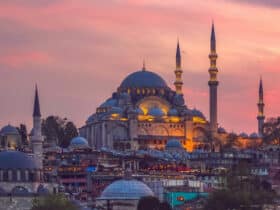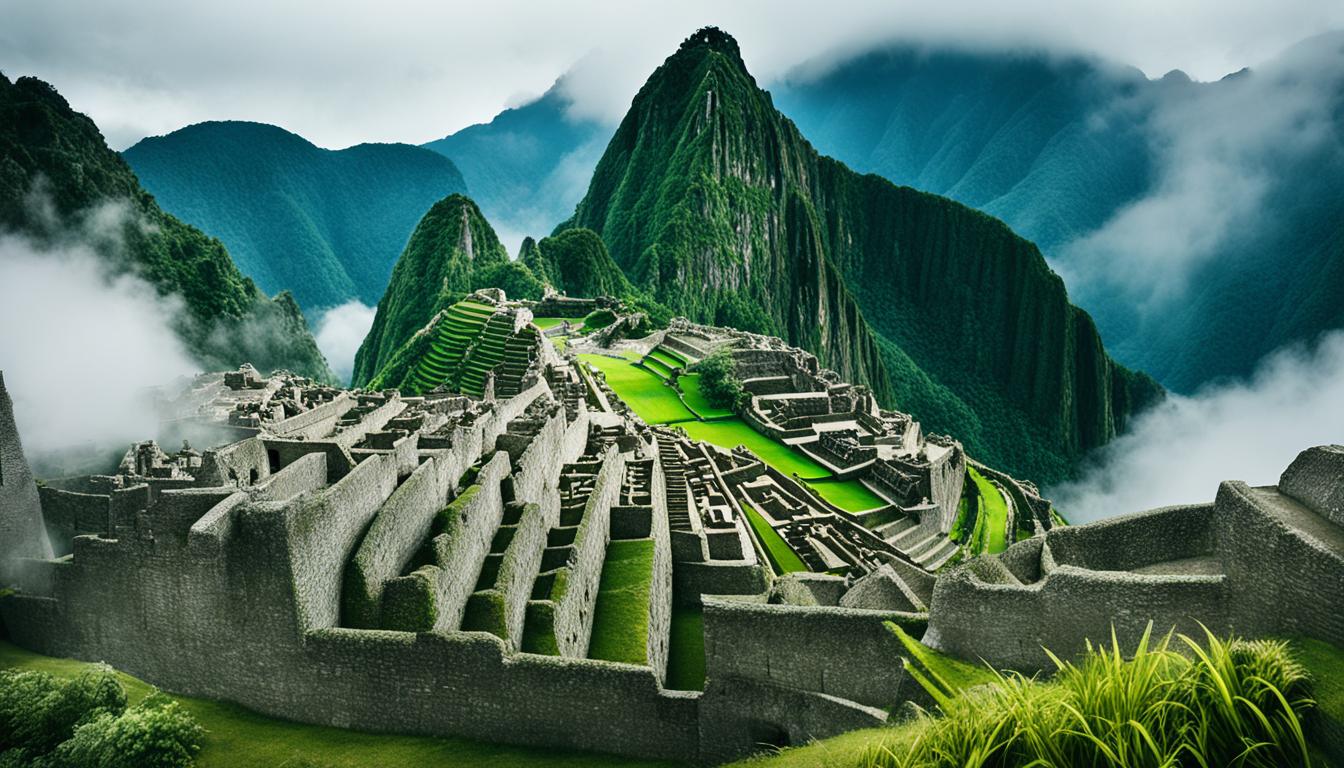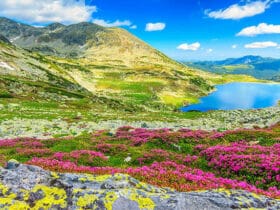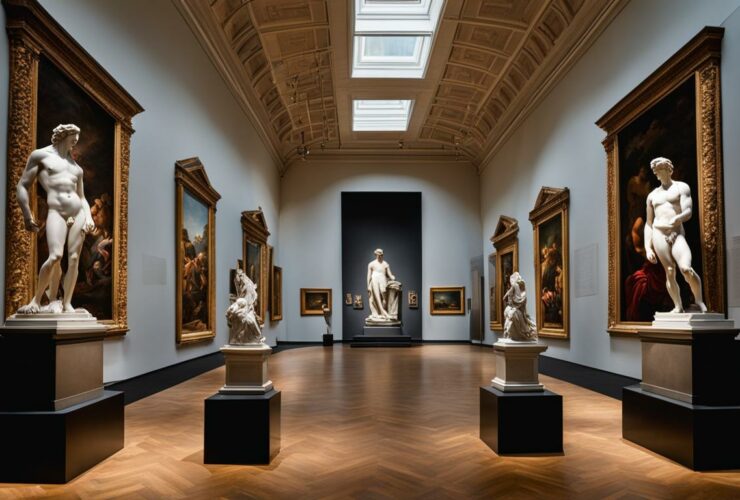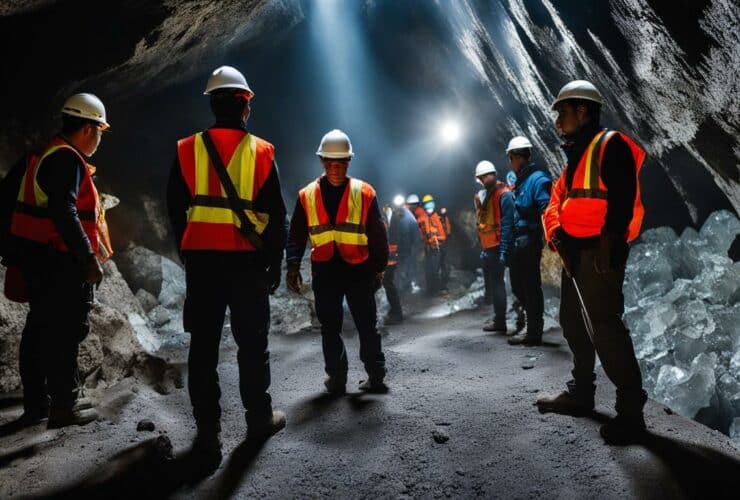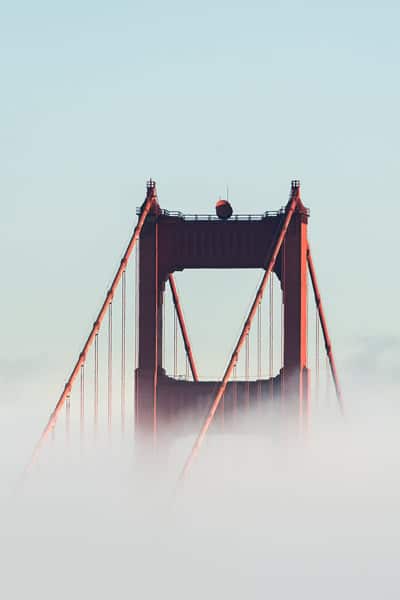Welcome to an exciting journey into the ancient wonders of Machu Picchu, a hidden city shrouded in mystery. As we explore this extraordinary Inca Empire marvel, we will uncover fascinating facts that will leave you in awe of its historical significance and cultural importance.
The majestic Machu Picchu, nestled among the breathtaking Andes Mountains in Peru, continues to captivate visitors with its awe-inspiring architecture and enigmatic allure. This enchanting UNESCO World Heritage Site holds countless secrets waiting to be unraveled. Prepare to embark on an exploration that will transport you back in time.
Key Takeaways:
- Machu Picchu is a hidden city located in the Andes Mountains of Peru.
- It was built by the Inca Empire and showcases their remarkable architectural craftsmanship.
- The historical significance and cultural importance of Machu Picchu within the Inca Empire are still subjects of study and fascination.
- Exploring this iconic archaeological site offers a unique travel experience in South America.
- Uncover the mysteries surrounding Machu Picchu through its purpose, theories of abandonment, and subsequent rediscovery.
The Inca Empire: A Brief Overview
Embark on a journey through time and explore the wonders of the Inca Empire, one of the greatest ancient civilizations in history. The Inca Empire, also known as Tawantinsuyu, spanned a vast territory along the western coast of South America, with its heartland nestled in the Andes Mountains.
The Inca Empire flourished from the 13th to the 16th century and was characterized by its advanced agricultural practices, intricate road networks, and stunning architectural achievements. Machu Picchu, a city perched high in the mountains, holds the key to understanding the history and cultural significance of the Incas.
It is believed that Machu Picchu served as a royal estate for the Inca emperor Pachacuti, who reigned during the mid-15th century. This magnificent city, hidden from the outside world, played a crucial role in the Inca civilization and served as a symbol of their power and prestige.
“Machu Picchu is a testament to the ingenuity and brilliance of the Inca civilization. Its construction on a nearly inaccessible mountain peak demonstrates their mastery of engineering and their ability to harmonize with the natural landscape. It continues to captivate the world with its beauty and mystery.” – Dr. Alejandro Flores, Archaeologist
Machu Picchu stands as a testament to the cultural and artistic achievements of the Inca Empire. Its unique blend of natural surroundings and intricate architecture showcases the unparalleled craftsmanship of the Incas. The city’s strategic location ensured its preservation for centuries, allowing us to marvel at the accomplishments of this remarkable civilization.
The Rise and Fall of the Inca Empire
The Inca Empire emerged in the 13th century, founded by Manco Capac, who is considered the first Inca ruler. However, it was under the leadership of Pachacuti that the Inca Empire reached its peak. Through a series of military campaigns and strategic alliances, Pachacuti expanded the empire, bringing diverse cultures and regions under Inca rule.
The Inca Empire thrived on a highly centralized system of governance, with the emperor at the pinnacle of power. The empire was divided into four regions, each governed by a governor appointed by the emperor. The Inca society was organized hierarchically, with nobles, priests, and military leaders holding prominent positions.
Despite its remarkable achievements, the Inca Empire faced its downfall with the arrival of the Spanish conquistadors led by Francisco Pizarro. The conquest of the Inca Empire was swift and brutal, leading to the demise of one of the most advanced civilizations of its time.
Today, the Inca Empire lives on through the remnants of its monumental architecture, the intricate road networks that spanned thousands of miles, and the enduring cultural traditions of the indigenous peoples of the Andes. By exploring Machu Picchu, we can catch a glimpse of the grandeur and complexity of this ancient civilization.
Unveiling Machu Picchu: An Archaeological Marvel
Prepare to journey into the heart of the Andes Mountains and uncover the hidden treasures of Machu Picchu, an archaeological marvel shrouded in mystery. This extraordinary site, often referred to as the “Hidden City,” is a testament to the brilliance of Inca craftsmanship and their profound understanding of engineering.
As you explore this ancient archaeological site, you’ll be awed by the intricate stone structures and iconic landmarks that have withstood the test of time. The citadel’s meticulously crafted terraces, imposing temples, and ceremonial plazas showcase the ingenuity of the Inca civilization, leaving visitors in awe.

At the heart of Machu Picchu lies its enigmatic charm. Surrounded by lush, mist-covered mountains, this secluded sanctuary exudes an otherworldly ambiance that has captivated explorers and historians alike. The Inca Empire’s choice to construct Machu Picchu in such a breathtaking and secluded location adds to its allure, inviting speculation about its specific purpose and function.
Witness the impressive feats of architecture as you marvel at the Intihuatana Stone, an astronomical device used by the Incas to align with the heavens. Stand in awe at the awe-inspiring Temple of the Sun, where the sun’s rays shine through precisely positioned windows during the winter solstice.
Exploring Machu Picchu is like stepping back in time, immersing yourself in the ancient Inca culture and gaining a deeper understanding of their achievements. This iconic landmark is not only a testament to the Inca Empire’s grandeur but also serves as a valuable window into their way of life.
Architectural Marvels and Iconic Landmarks
Let’s take a closer look at some of the architectural marvels and iconic landmarks that await you at Machu Picchu:
| Architectural Marvels | Iconic Landmarks |
|---|---|
| 1. Intihuatana Stone | 1. Temple of the Sun |
| 2. Machu Picchu’s Terraces | 2. Temple of the Three Windows |
| 3. Huayna Picchu | 3. Intipunku (The Sun Gate) |
| 4. Temple of the Condor | 4. Machu Picchu’s Main Plaza |
These architectural marvels and iconic landmarks are testaments to the Inca Empire’s advanced knowledge of engineering, astronomy, and their deep connection with the natural world. Each structure holds a unique story and bears witness to the Inca’s spiritual beliefs and rituals.
As you traverse the ancient paths of Machu Picchu, you’ll gain a newfound appreciation for the precision and attention to detail that the Incas poured into their constructions. This hidden city stands as a testament to their ingenuity and legacy, attracting visitors from all corners of the globe who yearn to unravel its secrets.
Journey Through Machu Picchu: A Unique Travel Experience
If you’re planning a trip to Machu Picchu, Peru, get ready for a one-of-a-kind travel experience in South America. Here is some essential travel information to help you make the most of your journey.
Best Time to Visit
Machu Picchu is a year-round destination, but the best time to visit is during the dry season from May to September. During these months, you can expect clear skies and pleasant temperatures, making it ideal for exploring the site. However, keep in mind that this is also the peak tourist season, so expect larger crowds.
How to Reach Machu Picchu
To reach Machu Picchu, you’ll need to travel to Cusco, the gateway city. From Cusco, you have two main options:
- Train: The most popular and convenient way to reach Machu Picchu is by train. The train journey offers stunning views of the Andean landscape and takes you to Aguas Calientes, the closest town to Machu Picchu.
- Trekking: For adventure seekers, the trek to Machu Picchu is an incredible experience. The most famous trek is the Inca Trail, a four-day hike that takes you through breathtaking scenery before reaching the ancient city.
Tips for Exploring the Site
Here are some tips to enhance your experience at Machu Picchu:
- Start early: Arrive at the site early in the morning to avoid the crowds and catch the sunrise.
- Hire a guide: Consider hiring a knowledgeable guide to learn more about the history and significance of Machu Picchu.
- Bring essentials: Don’t forget to pack sunscreen, a hat, comfortable walking shoes, and plenty of water.
- Respect the site: Machu Picchu is a fragile archaeological site, so be respectful and follow the rules, including not touching the stones or climbing on restricted areas.
Embark on a journey like no other as you explore the wonders of Machu Picchu. Immerse yourself in the rich history, breathtaking landscapes, and cultural heritage of this iconic site. Get ready to create unforgettable memories in the heart of Peru.
Secrets of Machu Picchu: Unraveling the Enigma
As we delve deeper into the historical significance and cultural importance of Machu Picchu within the Inca Empire, a myriad of secrets and enigmatic features come to light. Let’s explore some fascinating facts that shed light on the purpose and mysteries surrounding this ancient architectural marvel.
An Architectural Masterpiece:
Machu Picchu is known for its remarkable construction and intricate architectural design. The city features precise stonework, showcasing the advanced engineering skills of the Inca civilization. The buildings were constructed without the use of mortar, with the stones fitting together like puzzle pieces.
“The city appears to have been sculpted rather than built.”
Theories Surrounding its Purpose:
While historians have put forth several theories regarding the purpose of Machu Picchu, there is no definitive answer. Some believe it was a sacred religious site, while others suggest it served as a retreat for Inca nobility. Another theory proposes that it was an agricultural testing ground or a center for astronomical observations.
The Abandonment of Machu Picchu:
One of the enduring mysteries of Machu Picchu is its sudden abandonment by the Inca civilization. The city was abandoned in the mid-16th century, during the Spanish conquest of Peru. The reasons behind this significant event remain unclear, leaving historians to speculate about potential factors such as disease, civil unrest, or relocation to evade Spanish conquerors.
Rediscovery and UNESCO World Heritage Site:
Machu Picchu remained hidden from the world for centuries until its rediscovery in 1911 by Hiram Bingham, an American explorer. The significance of the site was immediately recognized, leading to its designation as a UNESCO World Heritage Site in 1983. Today, it stands as one of the most iconic and revered archaeological sites in the world.
Machu Picchu Facts: At a Glance
| Location | Elevation | Construction Period |
|---|---|---|
| Peru | 7,970 feet (2,430 meters) | Built between 1438 and 1472 |
| Abandoned in the mid-16th century | ||
| Rediscovered in 1911 |
Conclusion
In conclusion, Machu Picchu stands as a remarkable testament to the artistry and ingenuity of the Inca civilization. This hidden city, tucked away in the majestic Andes Mountains of Peru, continues to mystify and captivate visitors from around the world.
The historical significance of Machu Picchu is undeniable. It offers a fascinating glimpse into the achievements of the Inca Empire, showcasing their advanced architectural and engineering skills. The intricate stone structures and terraces that grace the landscape are a testament to the craftsmanship of the Incas.
For those seeking an unforgettable travel experience, Machu Picchu awaits. Plan your visit to this iconic archaeological site, and embark on a journey through time. Immerse yourself in the heart of the Inca Empire and witness the awe-inspiring beauty that has mesmerized generations.
FAQ
What is Machu Picchu?
Machu Picchu is an ancient Inca city located in the Andes Mountains of Peru. It is considered one of the most iconic archaeological sites in the world.
When was Machu Picchu built?
Machu Picchu was built around the 15th century, during the height of the Inca Empire. However, it remained hidden from the outside world until its rediscovery in 1911.
Why is Machu Picchu called a hidden city?
Machu Picchu is often referred to as a hidden city because of its remote location and the fact that it was hidden from the Spanish conquistadors. It was abandoned and remained virtually unknown until its rediscovery by Hiram Bingham.
What is the significance of Machu Picchu in Inca civilization?
Machu Picchu is believed to have served as a sacred site for the Inca civilization. It is thought to have had religious, political, and astronomical importance, showcasing the advanced knowledge and skills of the Incas.
How can I reach Machu Picchu?
The most common way to reach Machu Picchu is by train from the city of Cusco to the town of Aguas Calientes. From there, visitors can take a bus or hike up to the archaeological site.
When is the best time to visit Machu Picchu?
The dry season from May to September is considered the best time to visit Machu Picchu. During this time, the weather is generally more pleasant and there is less chance of rain or fog.
Are there any restrictions or regulations for visiting Machu Picchu?
Yes, there are certain regulations in place to preserve the site and manage the number of visitors. It is recommended to book your tickets in advance and follow the guidelines provided by the authorities.
What are some iconic landmarks in Machu Picchu?
Some iconic landmarks in Machu Picchu include the Temple of the Sun, the Intihuatana Stone, the Temple of the Three Windows, and the Sacred Plaza. These structures showcase the architectural brilliance of the Incas.
How long should I plan to spend at Machu Picchu?
It is recommended to allocate at least half a day to explore the main archaeological site of Machu Picchu. However, if you wish to hike any of the surrounding trails or visit other nearby sites, you may need additional time.
Can I hire a guide at Machu Picchu?
Yes, hiring a guide is highly recommended to fully appreciate the history and significance of Machu Picchu. Guides can provide insights, answer questions, and help navigate the site.




